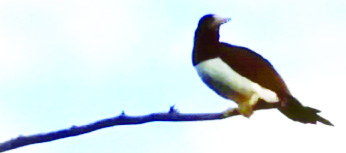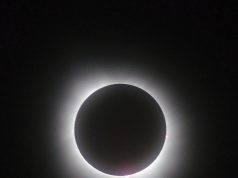Photo by TYRA FOX
NOT A “BOOBY” TRAP … This bird, pictured
in the Caney Creek area of Dierks Lake, has
been positively identified as a Brown Booby by
Dr. Dan Scheiman of the Arkansas Audubon
Society. Brown Boobies are not common
to Southwest Arkansas. The bird is the fifth
recorded ever in the state of Arkansas.
Nicole Tracy
Reporter
DIERKS — An unusual bird to the area was
spotted in the Caney Creek area of Dierks
Lake on November 3. The Brown Booby
(Sula leucogaster) is a seabird native to
tropical coastal waters. It is unknown how
exactly it ended up in Southwest Arkansas.
Mary and James Harris spotted the bird
while out camping on Dierks Lake. The
Harrises made contact with Dr. Dan Scheiman,
Bird Conservation Director for the
Audubon Society in Arkansas to report it.
This is the fifth confirmed sighting of
a Brown Booby in Arkansas. Other sightings
have been made in Saline, Garland,
Ouachita, and St. Francis counties, in the
years 2012 and 2013.
The bird has become a minor celebrity
in it’s own right, drawing people in from
all over the country to see it. “There have
been people from as far away as Kansas,
Memphis, Tennessee, Oklahoma, and Texas
so far to see it.” said Mary Harris.
Hurricane Patricia affected the areas
where the Brown Booby are generally
found on October 23.
Dr. Scheiman stated that
“This species is an excellent
flier, and individuals can
range hundreds to thousands
of miles from breeding
colonies. Why it sometimes
wanders inland, I’m not sure.
Perhaps it is looking for new
places to feed? I don’t think
weather events explain it,
though hurricanes definitely
are responsible for bringing
other seabirds inland.”
Exactly why the Brown
Booby is at Dierks Lake may
never be answered, but it is
without a doubt a rare occurrence
for Howard County.
“Most of the time, when
seabirds occur inland, they
stick around for a day to
a few weeks before disappearing,
presumably trying
to make their way back to
where they came from, or
find better places to feed.








